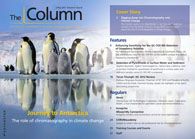Shimadzu Opens "Laboratory World" in Germany
Shimadzu officially opened a new laboratory building called ?Laboratory World? at the company?s headquarters in Duisberg, Germany on the 15th of April,. The building was officially opened in a traditional Japanese ceremony by the President and CEO of Shimadzu, Akira Nakamoto; the Japanese Consul, Kiyoshi Koinuma; and Duisberg?s Lord Mayor, Soren Link.
Shimadzu officially opened a new laboratory building called “Laboratory World” at the company’s headquarters in Duisberg, Germany on the 15th of April. The building was officially opened in a traditional Japanese ceremony by the President and CEO of Shimadzu, Akira Nakamoto; the Japanese Consul, Kiyoshi Koinuma; and Duisberg’s Lord Mayor, Soren Link.
Shimadzu invested €3.2 million into the laboratory that covers over 1,500m 2. The laboratory features training and testing facilities for scientists throughout Europe. The entire product range offered by Shimadzu will be available for demonstration, with an area specially dedicated to mass spectrometry technology and instrumentation.
The laboratory will provide a range of opportunities for Shimadzu and customers, according to Jürgen Kwass, Managing Director of Shimadzu Europa. Kwass added, ”In addition, we offer continuing education and training to customers as well as staff members. Another goal is to create an inspiring atmosphere for our team in which they can develop new methods and technologies for future-oriented products."
For more information please visit:
www.shimadzu.eu
href="http://images2.advanstar.com/PixelMags/lctc/digitaledition/May02-2013.html ">This story originally appeared in
The Column.
Click here to view that issue.

Removing Double-Stranded RNA Impurities Using Chromatography
April 8th 2025Researchers from Agency for Science, Technology and Research in Singapore recently published a review article exploring how chromatography can be used to remove double-stranded RNA impurities during mRNA therapeutics production.
The Effect of Time and Tide On PFAS Concentrations in Estuaries
April 8th 2025Oliver Jones and Navneet Singh from RMIT University, Melbourne, Australia discuss a recent study they conducted to investigate the relationship between tidal cycles and PFAS concentrations in estuarine systems, and offer practical advice on the sample preparation and LC–MS/MS techniques they used to achieve the best results.










